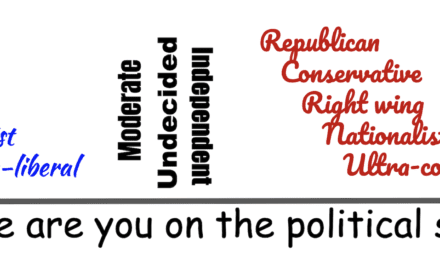Last updated on March 9th, 2025 at 02:58 pm
“The housing market will crash!” or “The housing market is rebounding”. What housing market? People write articles about the “housing market” and appear on TV discussing the condition of the housing market. Why is this? There is no single housing market in the United States. Home prices vary greatly across counties, states, and the nation. The unemployment rate varies greatly with a major impact on local housing markets.
Low mortgage rates do affect housing markets but in differing ways. Some areas where wealthy people live, buy, and sell are hardly affected by interest rates or unemployment. Yet, these areas are thrown in with all other areas to make a “housing market” or real estate market. The chief economist of the company will speak broadly about housing but that speech may not reflect the market where you live.
Median household income varies
Median household income varies greatly from area to area. People living in Orange County, Southern California have a much higher median household income than people who live in and around Phoenix. Property prices in an area or local market reflect the median household income of those living in the area.

If there is more economic growth in market A, that tends to translate to a more dynamic housing market. In areas where for example a major employer has closed, housing prices will reflect the shortfall in demand and switch from a neutral to a buyer’s market.
These markets can be significantly different with no two reflecting what some call the “housing market”. There are areas where many people are moving to such as cities in Florida. The current housing market in some of these cities is affected by increasing demand without much supply. Real estate prices in these areas will probably increase. This stimulates a seller’s market due to the low inventory of available homes.
Areas where people are living in large numbers
Areas, where people are leaving in larger numbers, may be creating a buyer’s market with the average months of home supply growing. This type of market can be a first-time buyer opportunity if they are willing to move from the metropolitan area they are living in.
I will give you a good example of a buyer’s market. The Mississippi Gulf Coast has been a neutral market for some time and during the later part of 2024, it became a buyers market. The area has many vacation homes purchased during the rush of COVID-19 by investors in colder climate areas.
At the time they could be rented as vacation homes on ABB and VRBO. The vacation market experienced a high rate of growth for a period a few years ago. This rapid growth put too many vacation homes on the market reducing the income of existing properties.
Many people were stuck with underperforming properties and started selling them often at reduced prices. At the same time, the number of people buying investment properties slowed greatly. The housing supply started to grow which put many properties on the market again making it more difficult for sellers to make a quick sale.
People move to areas for lower housing costs
At the same time, many people are moving to the Mississippi Gulf Coast to live because the current market indicates home values are significantly lower than in most other areas of the country. New home builders are rapidly adding new properties and people from outside of the area are buying them fast.
In effect, the Mississippi Gulf Coast has virtually two separate housing markets. One for existing and older homes and one for new construction.
At the same time I am writing this, many markets are experiencing an increase in the median sales price. Even with high interest rates compared to a few years ago, homes in some markets are still selling.

Reasons why there is no “housing market”
1. Local Economies
- Housing demand in a market like Austin, Texas, is shaped by its booming tech industry, whereas Detroit’s housing market might be influenced by its automotive history and industrial base.
2. Regional Variations
- Factors like climate, population growth, and urban vs. rural settings create vastly different conditions. Coastal areas, for instance, might see higher demand due to desirable locations, while inland regions might experience slower growth.
3. Policy and Regulations
- Local zoning laws, property taxes, and development incentives differ widely and directly impact the supply and affordability of housing in each area.
4. Economic Cycles
- A downturn in the national economy may have minimal effects in some resilient housing markets but could severely impact others.
5. Supply Constraints
- Markets with limited land for development (e.g., San Francisco) see vastly different dynamics compared to cities with ample space to grow (e.g., Dallas).
6. Demographic Shifts
- Population aging, migration patterns, and remote work opportunities are changing housing needs in specific regions more dramatically than others.
By understanding that each housing market operates independently within its regional and economic context, professionals in real estate can provide more tailored advice and solutions. It also helps buyers, sellers, and investors make better-informed decisions.
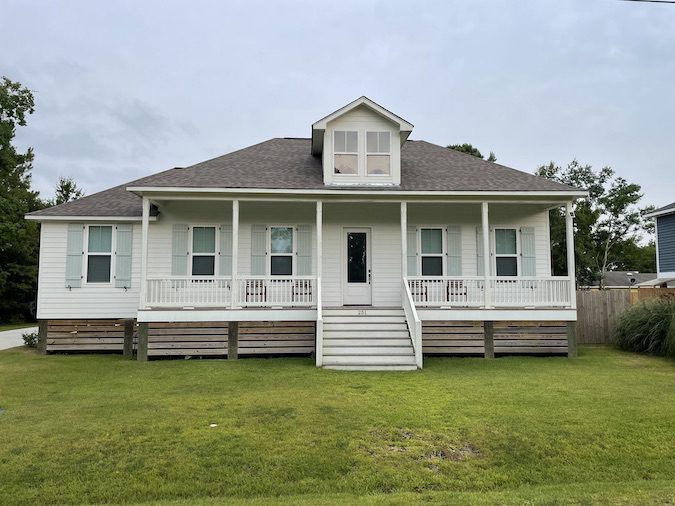
This is a comparison of two completely different housing markets
San Francisco, California
- Market Characteristics
- Median Home Price: Extremely high (often exceeding $1.5 million).
- Inventory: Limited supply due to geographic constraints (peninsula surrounded by water) and strict zoning laws.
- Demand: Driven by a booming tech industry with high-paying jobs, creating competition among wealthy buyers.
- Affordability: Among the least affordable markets in the U.S., with a significant income-to-price mismatch.
- Economic Factors
- Tech Dominance: Silicon Valley drives high wages and intense housing demand.
- Employment Base: High-income jobs lead to greater purchasing power among buyers, inflating prices.
- Migration Trends: Outmigration of middle-income families due to the cost of living, replaced by high-income professionals.
- Challenges
- Housing affordability crisis, homelessness, and NIMBYism (Not In My Backyard policies) limit new construction.
- Rent control laws create a highly regulated rental market.
Des Moines, Iowa
- Market Characteristics
- Median Home Price: Relatively low (around $250,000).
- Inventory: Moderate, with new developments being built regularly.
- Demand: Driven by a steady influx of families and retirees seeking affordability and quality of life.
- Affordability: One of the most affordable markets, with a favorable income-to-price ratio.
- Economic Factors
- Diverse Economy: Focused on insurance, agriculture, and manufacturing, offering steady but modest job growth.
- Employment Base: Stable but lower-paying jobs compared to tech hubs.
- Migration Trends: Attracts people from nearby states and urban centers looking for a slower pace of life.
- Challenges
- Slower appreciation rates make it less appealing to investors seeking rapid returns.
- Vulnerability to economic shifts in agriculture and manufacturing.
Why the Differences Exist
- Economic Drivers
- San Francisco’s tech-centric economy attracts global talent and wealth, while Des Moines relies on regional industries and provides steady, predictable growth.
- Geography
- San Francisco’s limited physical space increases scarcity and price pressure, while Des Moines has ample land for expansion.
- Housing Policies
- San Francisco faces restrictive zoning and regulatory barriers, while Des Moines supports new developments, easing housing pressure.
- Cost of Living
- San Francisco’s sky-high housing costs are paired with high wages, but affordability remains an issue. Des Moines, with lower costs, provides a higher standard of living for average incomes.
- Cultural Appeal
- San Francisco is a global city with cultural and lifestyle amenities attracting high-net-worth individuals. Des Moines appeals more to those seeking stability and affordability.
Real estate agents belong to a Multiple Listing Service in their area. The MLS is where properties are posted by real estate agents who sign a listing agreement with a seller. One would think that a MLS would be a market by itself.
There are between 550-600 MLS groups making at least that many local markets. Some however are so large such is in California that a single MLS may encompass multiple housing markets. I wanted you to see the diversity and how far off people are who talk about “The housing market”.
Do mortgage rates vary by market
Mortgage rates themselves do not vary significantly from one housing market to another because they are largely determined by national and global economic factors. However, there are subtle differences and variations that can arise due to local conditions, borrower profiles, and lender competition in specific markets. The average 30-year mortgage rate for example is similar across the country.
Here’s an explanation:
Why Mortgage Rates Are Similar Nationwide
- National Economic Factors
- Mortgage rates are primarily influenced by national benchmarks like the Federal Reserve’s policies, the 10-year Treasury yield, and the overall health of the U.S. economy.
- Factors such as inflation, unemployment rates, and GDP growth affect rates universally across the country.
- Global Economic Trends
- Events like international market instability or central bank actions worldwide can influence U.S. mortgage rates, creating uniform trends nationwide.
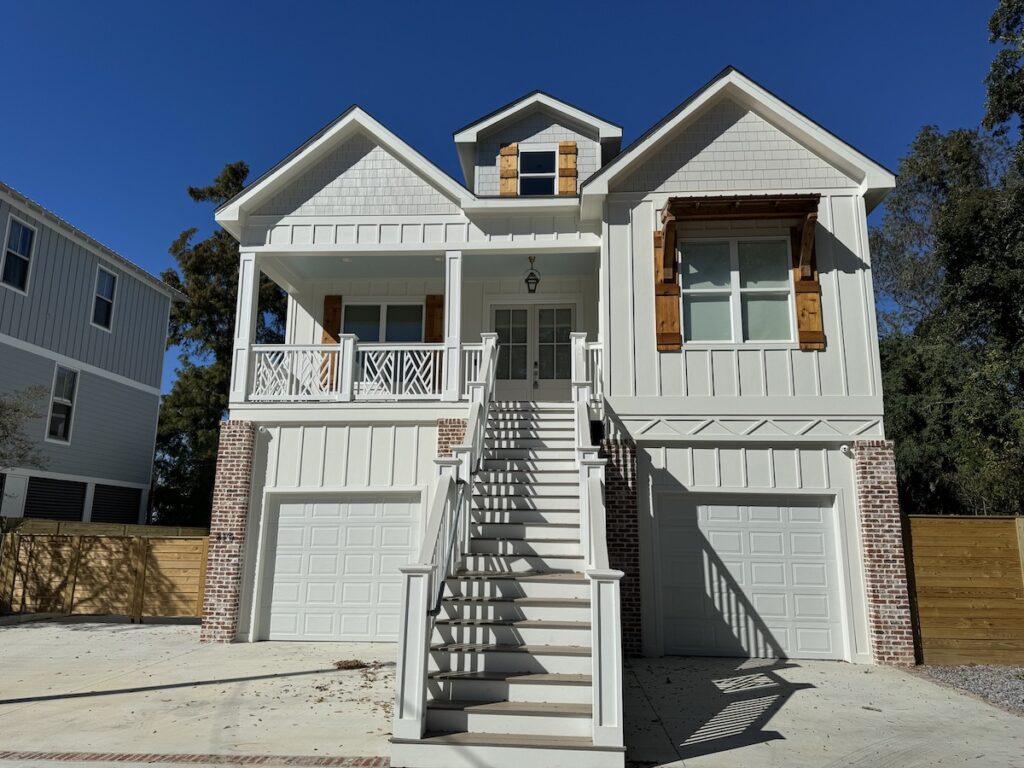
Why Rates Can Vary Locally
- Lender Competition
- In some housing markets with more banks, credit unions, or independent lenders competing for borrowers, rates or loan terms might be slightly more favorable. For example, a market with many regional banks may offer lower rates to attract customers.
- Loan Products Popularity
- In high-cost areas (e.g., San Francisco), jumbo loans are more common due to high home prices. These loans often have different rates compared to conventional loans found in lower-cost areas like Des Moines, Iowa.
- Borrower Risk Profile
- Borrowers in different markets may have distinct financial characteristics:
- High-cost areas might attract borrowers with higher incomes and credit scores, qualifying them for better rates.
- In lower-cost areas, borrowers with more moderate incomes or credit scores might face slightly higher rates due to perceived risk.
- Borrowers in different markets may have distinct financial characteristics:
- State Laws and Taxes
- Local property taxes and state-specific mortgage laws can indirectly affect borrowing costs, though they don’t directly impact the interest rate.
- Loan Limits and Programs
- Federal Housing Administration (FHA) loan limits and programs vary by region. High-cost markets might have higher limits, influencing the types of loans offered and their associated rates.
- Rural markets might benefit from USDA loans, which offer competitive rates for eligible buyers.
Examples of Local Variation
- San Francisco, California
- Higher prevalence of jumbo loans due to expensive housing.
- Borrowers with stronger credit profiles may access slightly better rates.
- Des Moines, Iowa
- More conventional and FHA loans due to lower housing costs.
- Rural areas may benefit from USDA loans with lower rates and no down payment.
How to Find the Best Rate in Your Market
- Shop Around: Compare rates from multiple lenders, including national banks, local banks, and credit unions.
- Consider Loan Types: Evaluate whether conventional, FHA, VA, or USDA loans are more common or advantageous in your area.
- Leverage Local Expertise: Work with a local mortgage broker who understands the market’s nuances and lender offerings.
Conclusion
While mortgage rates are largely set at the national level, subtle differences can arise due to local lender competition, borrower profiles, and the types of loans prevalent in a specific market. For most borrowers, the biggest factor in determining their rate is their individual creditworthiness and financial situation, not the housing market they’re buying into.
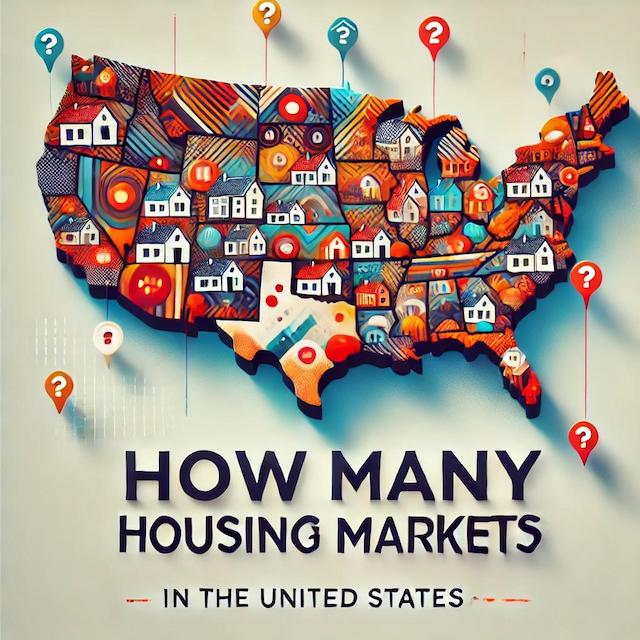
How many housing markets are there in the United States?
The number of distinctive housing markets in the U.S. can vary depending on how they are defined, but broadly speaking, there are hundreds of unique housing markets, each shaped by local economic, demographic, and geographic factors. Here’s how they are categorized:
1. Metropolitan Statistical Areas (MSAs)
- Definition: MSAs are geographic regions defined by the U.S. Office of Management and Budget (OMB) that represent urbanized areas and their surrounding communities with close economic ties.
- Number: There are 384 MSAs in the U.S.
- Example:
- San Francisco-Oakland-Berkeley, CA: A high-cost market driven by tech.
- Birmingham-Hoover, AL: A more affordable market with a slower pace of growth.
2. Micropolitan Statistical Areas
- Definition: Smaller urban areas with populations between 10,000 and 50,000 that serve as economic hubs for surrounding rural areas.
- Number: There are 543 micropolitan areas in the U.S.
- Example:
- Bozeman, MT: A growing market influenced by tourism and lifestyle appeal.
3. Localized Markets
Each MSA or micropolitan area can be further divided into localized housing submarkets based on:
- Urban vs. Suburban vs. Rural Areas
- Example: The Atlanta metro area has distinct markets such as downtown Atlanta, suburban Alpharetta, and rural outlying counties.
- Neighborhoods
- Housing demand, price trends, and buyer demographics vary widely even within a single city. For instance:
- Los Angeles has affluent areas like Beverly Hills and more affordable neighborhoods like Van Nuys.
- Housing demand, price trends, and buyer demographics vary widely even within a single city. For instance:
4. Regional Markets
Broad regions of the U.S. have their own housing dynamics:
- Northeast: Older homes, high population density, and higher prices.
- South: Growing populations, affordable housing, and diverse economies.
- Midwest: Stable prices, slower growth, and affordable inventory.
- West: Expensive markets with strong price appreciation, particularly in coastal areas.
5. Specialized Markets
Some housing markets are defined by unique characteristics or niches:
- Vacation/Second-Home Markets
- Examples: Aspen, CO, or the Florida Keys.
- Military Markets
- Housing near military bases like Fort Bragg, NC, or Norfolk, VA.
- College Towns
- Housing markets are influenced by student populations, such as Ann Arbor, MI, or Boulder, CO.
Estimated Total
When factoring in MSAs, micropolitan areas, neighborhood submarkets, and specialized categories, the U.S. likely has 1,000 to 2,000 distinctive housing markets. The exact number depends on how narrowly or broadly one defines the market boundaries.
Why This Matters
Understanding the diversity of housing markets helps:
- Buyers and Sellers: Tailor their strategies to local conditions.
- Investors: Identify opportunities in underperforming or high-growth areas.
- Policymakers: Address housing affordability and supply challenges specific to different regions.
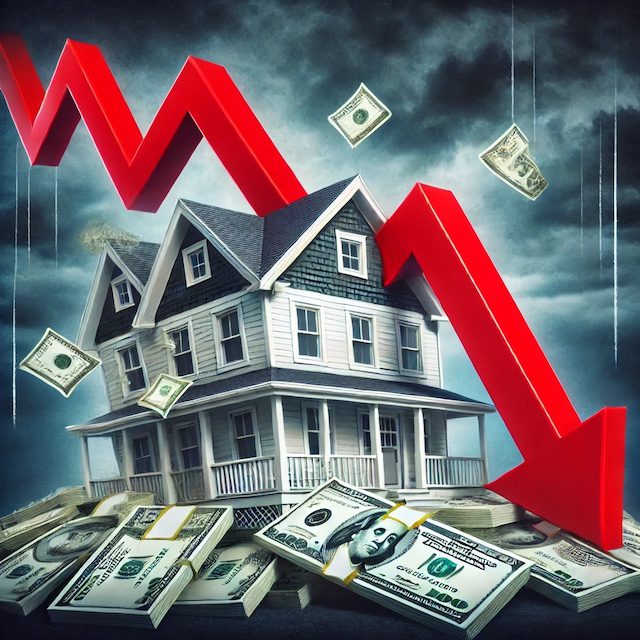
The housing market crash of 2009-2010
Years ago, housing on much of a national basis “crashed”. Not all areas suffered in the same way. Some markets were very stable because they had not been hotbeds of new listings and rapid sales with mortgage payments set up to grow over time. Members of Congress forced Freddie Mac and Fannie Mae the buyers of mortgages to accept virtually anything. Banks lowered their lending standards and the rest is history.
It was precisely because the mortgage industry is a national business that mortgage lenders were able to spread the cancer across the nation. The worst effects were in California, Arizona, Nevada, and Florida. All of these markets were areas where people were buying investment properties including luxury apartments and where home building was off the charts.
Rental properties suffered as prices of single-family homes dropped so did rents. Without rents subsidizing investment properties, investors fled in large numbers. Selling prices dropped and this led to our “great depression”. On the other side, first-time buyers were able to find bargains.
Home buyer equity vanished during this time which left people with no choice but to walk away from their homes. People with home equity often stayed and worked through the issues.
I want to reiterate not all areas were affected. That is because there is no housing market. The following provides some clarity about the areas that were largely unaffected.
The 2009 housing crash affected most of the United States, but certain areas were largely insulated from its worst effects. These regions typically had more stable housing markets, fewer speculative investments, and economic conditions that prevented sharp declines in home values.
Here are the key factors and examples of areas that were less impacted:
1. Midwest
- Why Less Affected:
- Home prices in the Midwest were already modest before the crash, with little speculative buying or significant price inflation.
- Economies in these areas were less reliant on industries like real estate and construction, which were hit hardest during the crash.
- Examples:
- Pittsburgh, Pennsylvania: Home prices remained stable due to a diversified economy (healthcare, education, and technology).
- Columbus, Ohio: Moderate growth and affordability insulated the market from extreme fluctuations.
- Des Moines, Iowa: A steady economy focused on insurance and agriculture provided stability.
2. Texas
- Why Less Affected:
- Texas had relatively affordable housing prices and avoided the rampant speculative bubble seen in other states.
- Strict lending regulations prevented risky mortgage practices.
- A booming energy sector supported the economy during the downturn.
- Examples:
- Austin, Texas: While it experienced some price declines, the tech and education sectors provided resilience.
- San Antonio and Dallas-Fort Worth: Affordable housing and strong job markets mitigated losses.
3. Rural Areas and Smaller Markets
- Why Less Affected:
- These areas were not part of the real estate speculation frenzy.
- Housing demand was steady, with prices reflecting local incomes rather than investor activity.
- Examples:
- Many parts of the Great Plains, such as Nebraska and the Dakotas, experienced minimal price changes.
- Montana and Wyoming: Stable rural economies and lower housing demand shielded these states from dramatic impacts.
4. Select Parts of the Northeast
- Why Less Affected:
- Some areas in the Northeast, especially those with slower growth or less speculative activity, avoided significant declines.
- Examples:
- Albany, New York: A government-focused economy and lack of rapid price increases insulated the market.
- Buffalo, New York: Home prices remained stable due to minimal housing bubble effects.
5. Energy and Resource-Based Economies
- Why Less Affected:
- Areas with strong ties to the energy sector or other natural resources experienced steady job markets during the crash.
- Examples:
- Bismarck, North Dakota: Supported by the energy boom and a stable economy.
- Anchorage, Alaska: Resource-driven economy helped maintain housing demand.
Key Characteristics of Resilient Areas
- Affordable Housing: Markets with low housing price-to-income ratios avoided unsustainable price increases.
- Economic Stability: Diverse or resource-driven economies support local housing demand.
- Low Speculation: Regions with fewer investors and speculative buying had less volatility.
- Regulation: States with stricter lending practices avoided the widespread use of subprime mortgages.
- Good Medical care: Areas with good medical care attract and retain retirees.
While the 2009 housing crash was widespread, areas in the Midwest, Texas, parts of the Northeast, and resource-based economies were largely insulated. These regions serve as examples of how affordability, economic diversity, and low speculation can create more resilient housing markets.
Frank’s Advocacy for Low-Income Borrowers Started the Housing Crisis
Barney Frank was a strong proponent of affordable housing initiatives. In hearings and public statements, he often argued for increasing access to homeownership for disadvantaged groups. He believed that government-sponsored entities like Fannie Mae and Freddie Mac should play a central role in achieving this goal.
Critics contend that:
- Frank, along with others in Congress, pressured financial institutions, Fannie Mae, and Freddie Mac to lower lending standards in an effort to promote homeownership.
- This pressure may have contributed to the proliferation of subprime loans, many of which were extended to borrowers who lacked the financial stability to meet their obligations.
Counterarguments and Context
- Private Sector’s Role:
- Many of the most problematic loans during the housing bubble were not backed by Fannie Mae or Freddie Mac but originated by private lenders operating in largely unregulated markets.
- The appetite for mortgage-backed securities on Wall Street fueled risky lending practices independently of government policy.
- Frank’s Later Remarks:
- After the crisis, Frank acknowledged that some affordable housing policies may have gone too far. He later advocated for reforms to tighten oversight of Fannie Mae and Freddie Mac, leading to their placement under federal conservatorship in 2008.
- Broader Responsibility:
- While Frank’s advocacy for low-income borrowers is part of the narrative, the crisis was the result of multiple factors, including deregulation of the financial industry, speculative behavior, and systemic issues in the housing market.
Congressional Testimony and Debates
In hearings, Frank’s insistence on supporting low-income borrowers did not necessarily equate to endorsing irresponsible lending. However, some argue that his stance may have signaled to lenders and GSEs that they should prioritize affordability over prudence.
Final Perspective
Frank’s intentions—to expand homeownership opportunities—were rooted in a belief in economic equity. However, the unintended consequences of these policies, combined with other systemic factors, contributed to the housing crisis. It’s a reminder of the complexity of balancing social goals with financial stability in policymaking.

Frequently Asked Questions FAQ
Will the housing market crash in 2025?
Since there is no housing market the answer is no. Could an individual housing market show signs of distress, absolutely, and at least one or more probably will.
Is there a housing shortage?
In some markets without doubt. In others there are surpluses. San Francisco has a housing shortage as this was written. Gulfport, MS has abundant housing. Check with real estate agents in markets you have an interest in to determine the condition there.
Can first-time buyers find homes?
Absolutely only if they are looking in a housing market that can provide housing to meet their financial needs. This may require relocation but there are areas that are very favorable to first-time buyers such as the Mississippi Gulf Coast with homes in the $200,000 range.
What happens when you finish paying off your house?
A great question and one that is often asked. A more extensive answer can be found in this article.
Could it be time to leave a high-cost area for a lower-cost housing area?
Many people particularly those who are about to retire may find that the quality of life will improve if they are not using most of their retirement funds to pay for a home where they currently live. Many areas of the country are lower in cost than CA, MN, WA, NY, IL, and others. Read this article for a full appreciation.
You will want to verify the information’s accuracy anytime you see someone on TV or the internet talking about the housing market. There is none. The market where you live and the one where you want to live are the only markets you need to be concerned about. The good news is that you can find a housing market somewhere in the United States with the appropriate home price growth and with a median sale price you can afford.
Discover more from RetireCoast.com
Subscribe to get the latest posts sent to your email.




